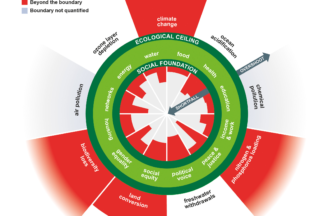It's a funny state of things: One where investors complain that ESG data is not standardised; where at the same time companies – and notably their boards – complain that investors do not ask for data in a standardised way. And where the very same companies and boards nonetheless prioritise proprietary measurement systems over any other one for their own supply chains and products.
It's a paradox. One that is not efficient, effective, or conducive to impact.
A call to leave politics to the side, focus in impact, and standardise, standardise, standardise.
Recently we have learned how the Board of Directors of the 20 largests banks (under)performs when it comes to ESG, and the consequences this has on their future fit investments.
This raises evidently the question: How do these 20 banks perform right now in terms of their carbon footprint? And: Do they have at the least commitments to work on a Paris Agreement trajectory? I answer these questions.
Afterall: Carbon – together with biodiversity – is one of THE most critical dimensions among the Planetary Boundaries. Because the already existing overshoot is putting our civilisation at risk. So far nothing new under the sun. Spoiler Alert: The results are pretty much in line with expectations. ESG-experience on the BoD does make a difference.
In an earlier post I asked: How can business, a business, downscale the Doughnut and make it operational?
In this post I look at three tools that praise themselves of being either part, or even all, of the support a business needs on the journey to integrate the Doughnut Economics concepts. Namely: Science-based Targets (SBTs), the B Impact Assessment(BIA), and the Future Fit Business Benchmark (FFBBM).
What are their fundamental differences and similarities?
Are they indeed a tool to help on the path to keeping within the Doughnut boundaries?
The Higg Index is an apparel and footwear industry self-assessment standard for assessing environmental and social sustainability throughout the supply chain.
The Higg Index 1.0 was released on June 26, 2012.




